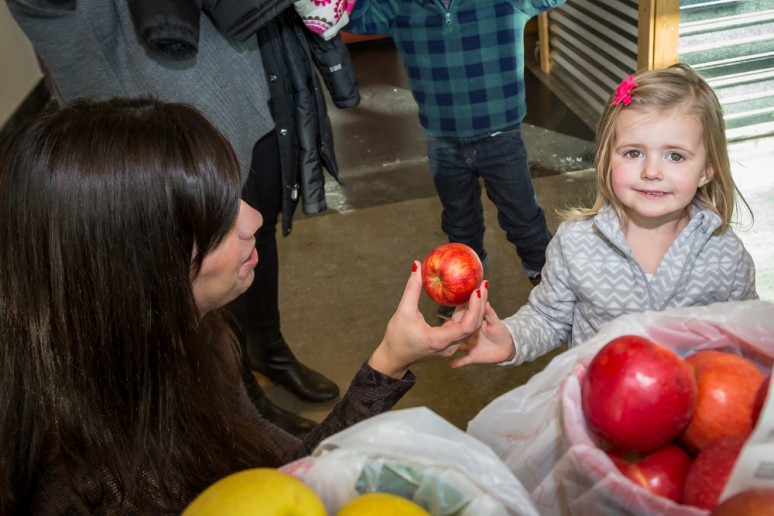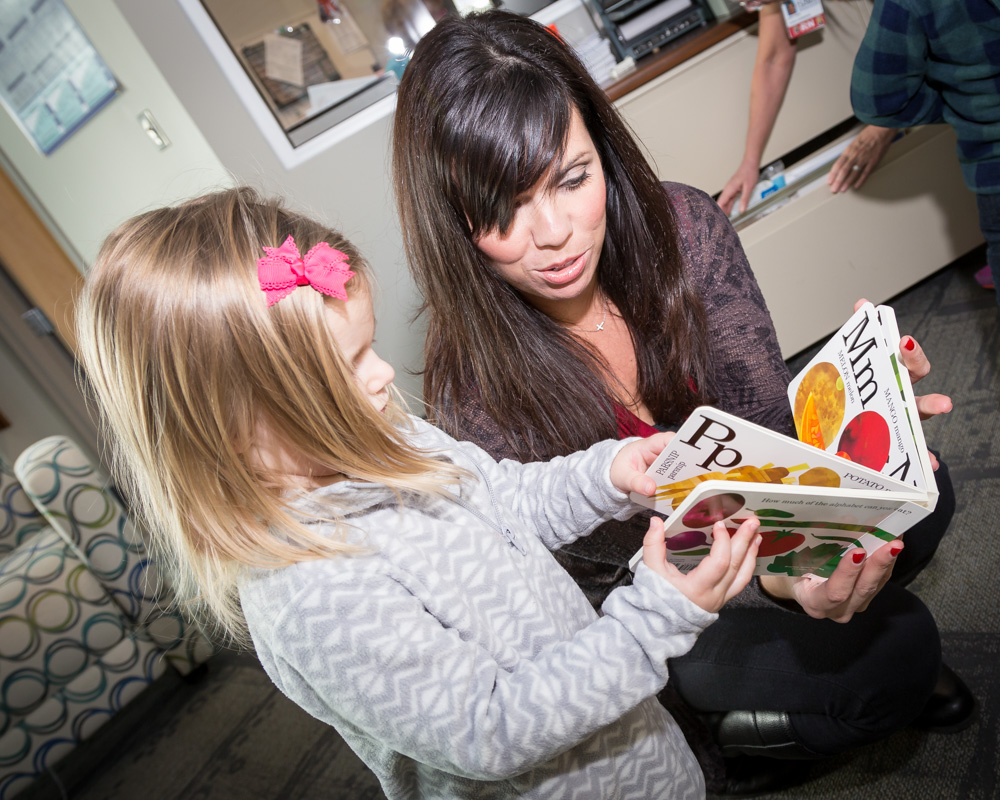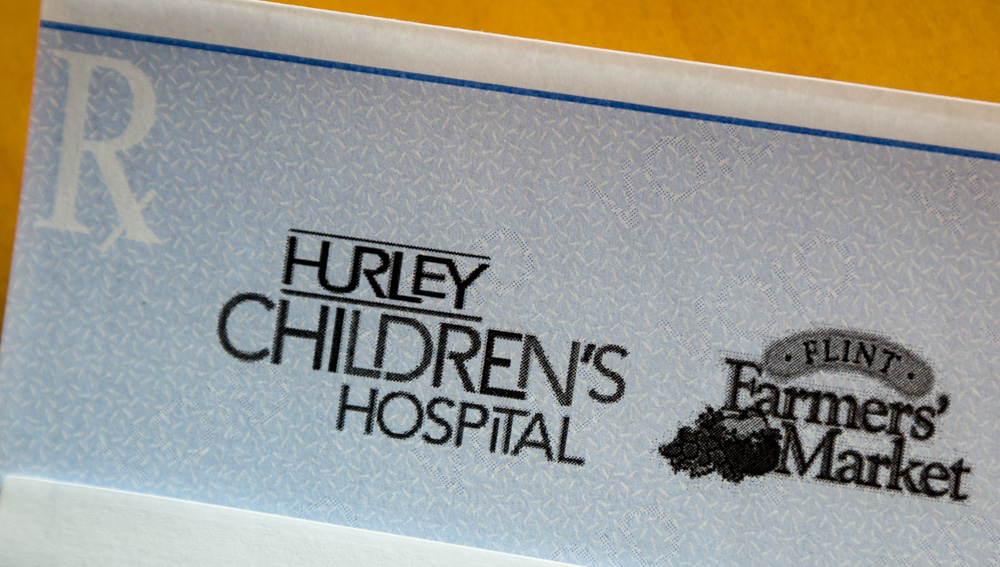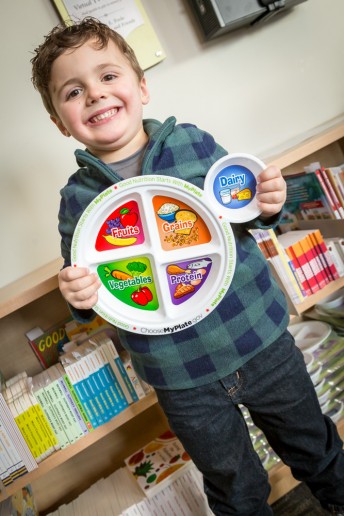Most Flint kids are eating one or fewer fruits or veggies a day. One of many results of this is a high obesity rate for children in the Flint area; as of 2011, 71 percent of Genesee County residents are either obese or overweight.
With a grant, Hurley Children’s Center has been operating a new program that provides integrated nutritional education services and resources for at-risk children. Until October, the program was named “Take One Apple Twice a Day,” and began with a $5 “prescription” for fresh fruit and veggies written by a resident pediatrician during well-child visits for kids age six months and older.
 In May 2016, Hurley received a $100,000 grant from the Rite Aid Foundation to continue this program. On June 1, Hurley opened the program to all pediatric visits (well and sick), and the Adolescent Clinic for ages six months and older, and began writing $10 prescriptions. With the Children’s Center located conveniently above the Flint Farmers’ Market, patients and their parents can take prescriptions down to the Market’s produce vendors and redeem them for $10 worth of fresh fruit or vegetables of their choosing.
In May 2016, Hurley received a $100,000 grant from the Rite Aid Foundation to continue this program. On June 1, Hurley opened the program to all pediatric visits (well and sick), and the Adolescent Clinic for ages six months and older, and began writing $10 prescriptions. With the Children’s Center located conveniently above the Flint Farmers’ Market, patients and their parents can take prescriptions down to the Market’s produce vendors and redeem them for $10 worth of fresh fruit or vegetables of their choosing.
“Flint kids have limitations where nutrition is concerned,” says Registered Dietician, Amanda Leddy, adding that accessibility is an issue and the frequency of their fruit and vegetable consumption is very low. From May-October 2016, 88% of all pediatric patients at the Children’s Center received fruit and veggie prescriptions.
On days when the Market is open, patients can go there to redeem prescriptions, and get a tour by Leddy herself on their first visit. On non-market days, she has bags of fruit and veggies worth $10 assembled and ready for them to take home. “Sometimes, it can be difficult for them to come back another day,” says Leddy, who began with the program in February 2016 and realized how hard healthy eating is for most families.
“Hurley is very special to me,” Leddy shares. “I really love working with children. It’s been my passion to help these families and be part of improving their health.”
It’s a long day for patients at the Children’s Center; they have to see a medical assistant, resident and attending physicians, and after any needed immunizations or bloodwork, then they can see Leddy. She consults with patients who are picky eaters, overweight, underweight, or have allergies that need to be supplemented. Leddy also provides nutrition handouts, books, information on portion sizes according to age, and then the resident doctor writes the prescription.
Vitamin C, calcium and iron – all found in fruit and vegetables – are most important for children’s growth. “Our focus has been on teaching overall healthy eating and nutrition,” Leddy explains. “Our patients consume a lot of sweetened juices, convenience foods, and fast food, because fresh fruit and vegetables aren’t available. These high-sugar diets contribute to obesity rates. Overall nutrition is more important.”
Nutrient-dense fruit and veggies, that may also contain fiber, help kids feel fuller longer, rather than convenience or fast foods, which will make them hungrier sooner. In addition to teaching nutritional values of foods, Leddy also teaches portion control, how to read nutrition fact labels, and stresses how cost-effective and time-saving meal and snack preparation are for the entire family.
“We talk about ways to make lifestyle changes, and also, to do it as a family. That is what will help them the most,” she says. “Kids pay attention to everything parents do; if mom doesn’t eat fruit and vegetables, then the kids won’t, either. We want to make sure that the lifestyle is embraced by the whole family.”
The patients take Leddy’s words to heart; as they set out to find fruit and veggies at the Market, Leddy is surprised by some of their choices – produce like broccoli, peppers, grapes and berries. “This is great,” she adds, “because those aren’t foods they get at home very often.”
By seeing patients more than once, Leddy can build on what they learn from her, and she is beginning to see improvements. Repetitive education and reinforcement seems to work, as she and the other professionals at the Children’s Center provide tools to help patients continue making better decisions.
“We want kids to have a comfortable, healthy relationship with food,” Leddy says. “This is just the beginning! We’re all very happy with the positive changes we’ve seen so far.”
One change has been eating more fruit and veggies, of course; but also a decrease in sugar-sweetened drink consumption from 58% to 12%, two times a day, as reported in October 2016. A more significant change has been the rate at which patients redeem prescriptions. From May 17-July 28, 2016 the redemption rate was 54%; it rose to 70% from July 28-October 31.
“The families are very grateful for the program,” says Leddy. “The kids get excited, and they eat the produce as they leave the Market. Families thank me for what we do for them.”
Sources: GFHC.org and “Take One Apple, Twice a Day: Integrating Nutrition Services for At-Risk Children.”
Photography by Eric Dutro










































